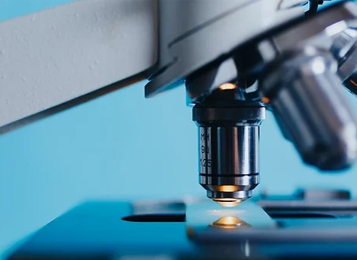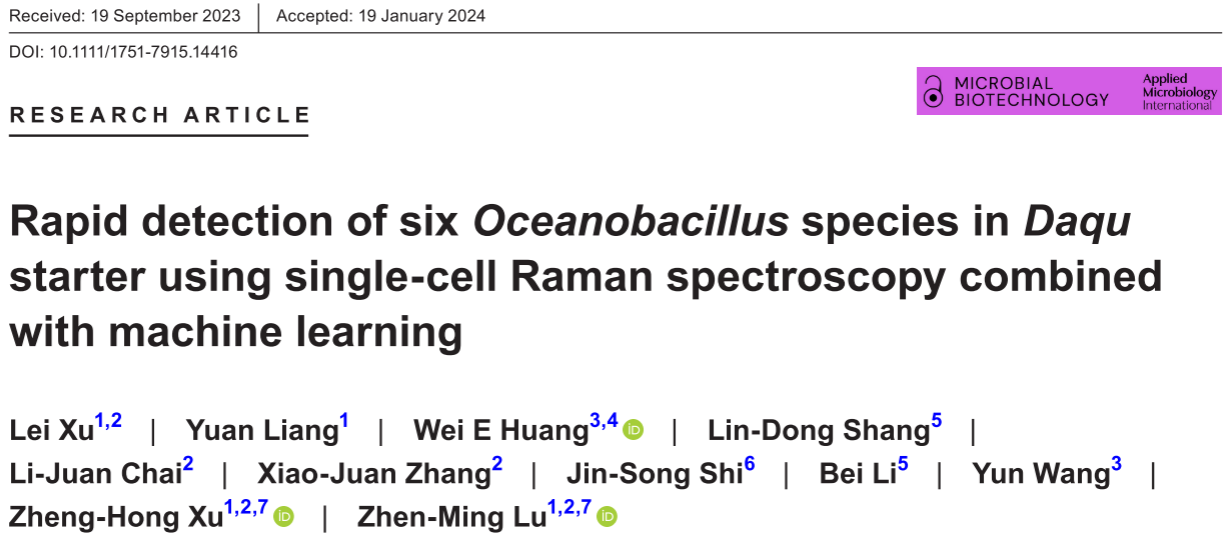

- Application Article
- Download
Hooke College

- About Us
- Team
- R & D and production
- Join Us
- Contact Us
- Qualification honor



On January 19, 2024, Professors Xu Zhenghong and Lu Zhenming from Jiangnan University, as well as Dr. Wang Yun from the Suzhou Advanced Research Center in Oxford, jointly published a paper titled "Rapid detection of six Oceanobacillus specifications in Daqu starter using single cell Raman spectroscopy combined with machine learning" in the journal Microbial Biotechnology. This study applied the core product of Changguang Chenying - P300 confocal Raman spectrometer combined with machine learning to detect six types of marine Bacillus in Daqu fermentation agents, and evaluated the potential application value of this method in quickly detecting functional microbial composition during Daqu fermentation.

Many traditional fermented foods and beverages industries around the world request the addition of multi-species starter cultures. However, the microbial community in starter cultures is subject to fluctuations due to their exposure to an open environment during fermentation. A rapid detection approach to identify the microbial composition of starter culture is essential to ensure the quality of the final products. Here, we applied single-cell Raman spectroscopy (SCRS) combined with machine learning to monitor Oceanobacillus species in Daqu starter, which plays crucial roles in the process of Chinese baijiu. First, a total of six Oceanobacillus species (O. caeni, O. kimchii, O. iheyensis, O. sojae, O. oncorhynchi subsp. Oncorhynchi and O. profundus) were detected in 44 Daqu samples by amplicon sequencing and isolated by pure culture. Then, we created a reference database of these Oceanobacillus strains which correlated their taxonomic data and single-cell Raman spectra (SCRS). Based on the SCRS dataset, five machine-learning algorithms were used to classify Oceanobacillus strains, among which support vector machine (SVM) showed the highest rate of accuracy. For validation of SVM-based model, we employed a synthetic microbial community composed of varying proportions of Oceanobacillus species and demonstrated a remarkable accuracy, with a mean error was less than 1% between the predicted result and the expected value. The relative abundance of six different Oceanobacillus species during Daqu fermentation was predicted within 60 min using this method, and the reliability of the method was proved by correlating the Raman spectrum with the amplicon sequencing profiles by partial least squares regression. Our study provides a rapid, non-destructive and label-free approach for rapid identification of Oceanobacillus species in Daqu starter culture, contributing to real-time monitoring of fermentation process and ensuring high-quality products.
The paper links:

+86-431-81077008
+86-571-86972756

Building 3, Photoelectric Information Industrial Park, No.7691 Ziyou Road, Changchun, Jilin, P.R.C
F2006, 2nd Floor,South Building, No. 368 Liuhe Road, Binjiang District, Hangzhou, Zhejiang,P.R.C

sales@hooke-instruments.com

COPYRIGHT©2022 HOOKE INSTRUMENTS LTD.ALL RIGHTS RESERVED 吉ICP备18001354号-1